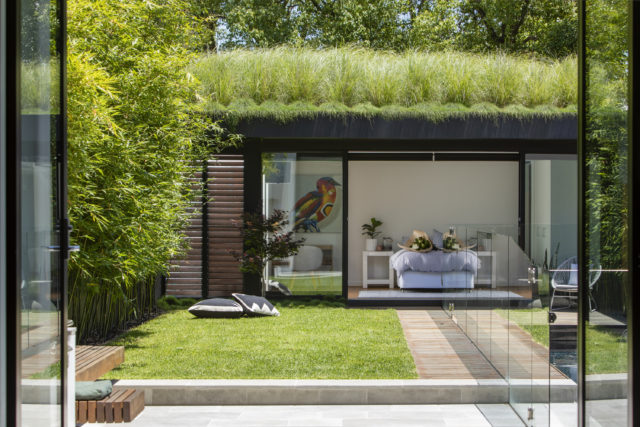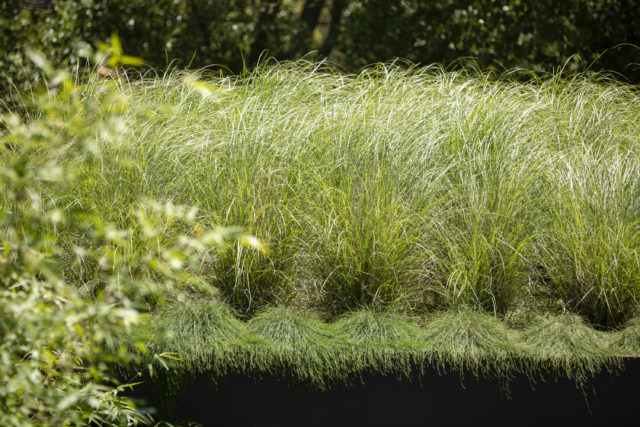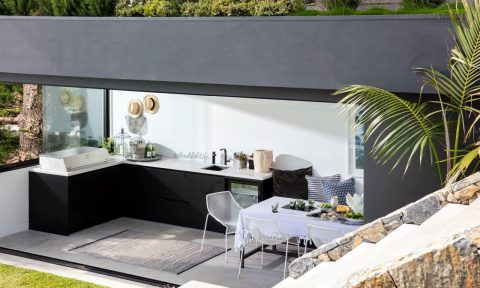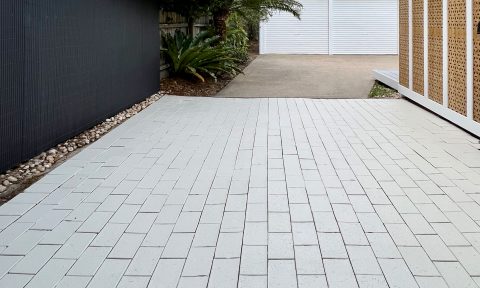With Australia firmly in the grip of drought, and downpours like the ones parts of NSW have enjoyed recently on the rare side, now is a great time to explore ways of capturing and utilising rain before it gets lost in storm water drains and adds to pollution in water ways.
“A significant amount of precious storm water is lost to us and adds pollution to our waterways as unfiltered rain runs straight into rivers and oceans,” says landscape designer Matt Leacy, co-founder and creative director of Landart Landscapes who suggests creating a rain garden, or storm water-smart garden, to make good use of rainfall. It is estimated that the equivalent of six Sydney Harbours of storm water runoff is produced in Australia’s urban areas each year.

“Rain gardens are self-watering, low maintenance, and help to reduce use of water in the garden, as well as filtering and purifying water so that it is then safe to be reused. Not only is a rain garden environmentally friendly and water efficient, but it can also boost overall property value and financial savings on water rates,” says Matt.
Rain gardens can be created in a variety of ways including downpipe diversion, a green roof, in-ground, planter box, tank diversion, swale or vegetable rain garden. “Research and consultation with a landscape designer on what will work best for a particular space is always advisable,” says Matt who shares his top tips for creating a simple rain garden with us today.
Where is the rain coming from?
“Firstly, choose where you’re going to capture the bulk of your storm water from,” says Matt. Will it be from a downpipe, driveway or pathway, or from a rainwater tank?
Planter box
Secondly, choose a planter box that fits your space, or excavate a trench that leads water to a lower lying point in your garden. “You will need to layer your planter box with gravel, soil and sand, and then a bottom layer of gravel to aid with water filtration, and to allow the water to drain freely at the base into an exit pipe,” says Matt who advises putting a waterproof liner in the planter box to ensure the storm water is captured for reuse.
The in-ground option
“If you’re creating an in-ground rain garden, dig the area with a gentle slope away from the house. You will also need to dig a shallow trench that re-directs water to this part of your garden where it can be captured and released, ready to be absorbed and filtered by plants and engineered soil. You will also probably need to plumb in pipes,” says Matt.
What to plant?
“Speak to your local nursery to check the best plants to use in your rain garden,” says Matt who is a fan of native plants such as kangaroo paws, native grasses, native rushes and Dianella when it comes to rain gardens. “The main thing is to ensure that whatever you choose is both drought-tolerant and able to withstand heavy rain and water. Native plants tend to be lower maintenance and more suitable than introduced species,” says Matt.
Ongoing maintenance
To retain moisture, Matt suggests covering your garden with mulch followed by gravel; bark or straw tend to float into storm water drains. You will also need to make sure you’re weeding until the plants have matured as well as monitoring the rain garden in the first heavy downpours to ensure water is evenly distributed. “You may need to also add plants or some rocks to help control erosion,” says Matt.
And if it doesn’t actually rain when you’re setting up your rain garden (the irony!), you will need to water your plants until they’re established, in compliance with local water restrictions.

When to employ a professional?
A fabulous alternative to the in-ground or planter box options, a rooftop rain garden can make a strong visual statement despite the added engineering concerns. And whether you’re looking at a rooftop of complex in-ground iteration, you’re best to consult a professional. “Rooftop gardens require a structural engineer to check the roof is properly intact and suitable for the type of rain garden you’re planning to do,” says Matt.
For more on Landart Landscapes | How to landscape a big backyard










